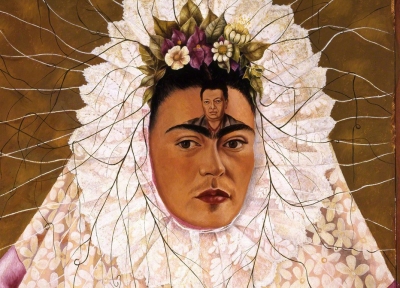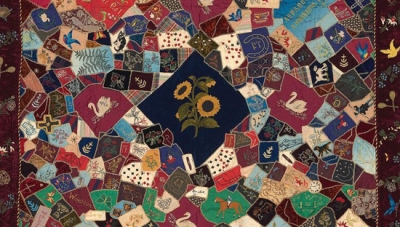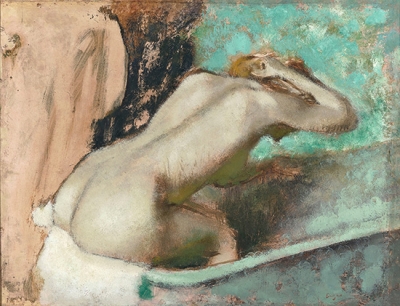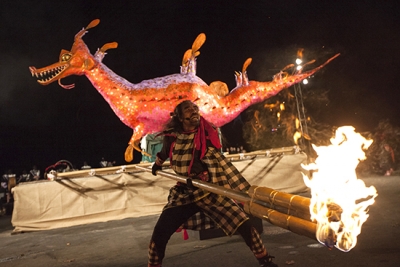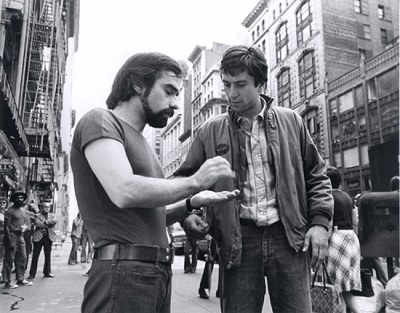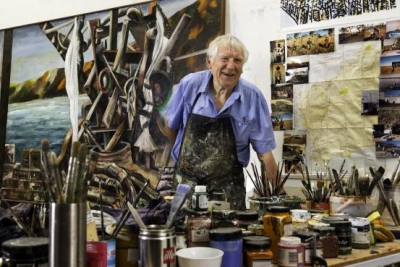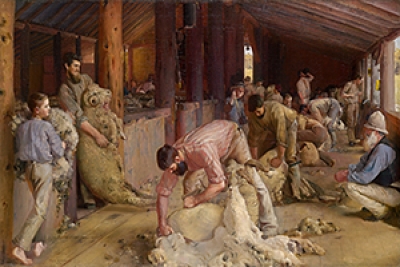Visual Arts
Frida Kahlo and Diego Rivera (Art Gallery of New South Wales)
Frida Kahlo and Diego Rivera are, without a doubt, the two most famous Mexican artists of the twentieth century, as notorious for their scandalous relationship and political views as they were for their creative genius. She was twenty-one years younger than him; he was a communist ...
... (read more)With a needle on cloth, Mary Jane Hannaford preserved her sharp observations of people as stout appliquéd figures set amidst interpretative renditions of Australian animals. Late in life she embroidered favourite verses and slyly captioned her pictures in quilts for her family. Close to one hundred ...
... (read more)Degas: A new vision is an exhibition of 206 works selected and presented by Henri Loyrette, the distinguished Degas scholar, former director of the Musée d'Orsay and subsequently director of the Musée du Louvre. In its range and variety the exhibition confirms the verdict of the writer and critic ...
... (read more)The streets of Hobart are especially cold and quiet on the longest night of the year. Those out and about are simply commuting from place to place, wrapped in scarves, hats, and jackets. Some head towards St David's Cathedral to attend Heart of Darkness, the penultimate performance of ...
... (read more)Scorsese, currently showing at the Australian Centre for the Moving Image in Melbourne, is not exactly the exhibition that is advertised, and that is a very good thing. Martin Scorsese's career has stretched over half a century and involves nearly sixty films. Yet anyone who has seen advance press ...
... (read more)Jan Senbergs: Observation-Imagination is a major retrospective survey of this artist's long career. The 120 works selected for exhibition range from his formative years in the 1960s to 2014. They show Senbergs moving freely to create a stylistic identity that draws upon, yet stands decisively ...
... (read more)In an age of blockbusters and ever bigger and grander exhibitions, The Greats: Masterpieces from the National Galleries of Scotland puts a compelling case for 'less is more'. This model exhibition demonstrates how satisfying a relatively small exhibition can be when the right works are chosen and installed handsomely ...
... (read more)The National Gallery of Australia's summer exhibition, opened by Prime Minister Malcolm Turnbull on 2 December, is devoted to one of Australia's finest and most popular artists, Tom Roberts. This major retrospective, under the curatorship of the NGA's Anne Gray, brings together all the major paintings, many of them ...
... (read more)The pleasures of looking at pictures from a young age inspired Albert Ullin. At the opening of this exhibition to mark his donation of eighty works by Australian children’s book illustrators to National Gallery of Victoria, he expressed the hope that they would be recognised as mainstream art.
Masterpieces from the Hermitage: the Legacy of Catherine the Great (NGV International)
Eight galleries of NGV International have been radically reshaped to host Masterpieces from the Hermitage, invoking the world of unbounded opulence of Russia’s Catherine the Great (1729–96). The installation, designed by the NGV’s Ingrid Ruhle, is dazzling, mimicking as it does the grand style of the State Hermitage Museum and incorporating some ...


